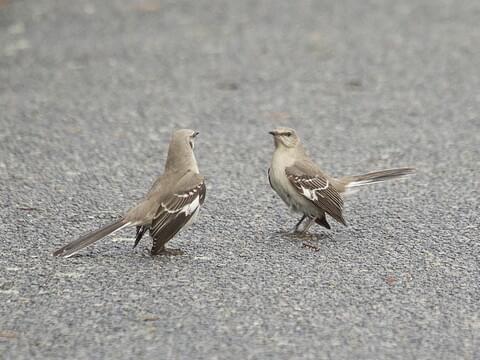
Contents
Unveiling the Mystery: A Guide to Small Black Birds with White Streaks
The avian world is a tapestry woven with vibrant colors and intricate patterns. Among this feathered multitude, small black birds adorned with white streaks hold a particular charm. These striking markings, often displayed in unique combinations, serve as valuable clues for birdwatchers eager to identify their backyard visitors or the fleeting beauties encountered on nature walks. Let’s embark on a journey to unveil some of these captivating black and white feathered friends.
A Field Guide to Familiar Favorites: Common Black Birds with White Streaks
The Dark-eyed Junco (Junco hyemalis): A familiar sight at bird feeders across North America, the Dark-eyed Junco is a captivating little bird. Its dark body, contrasting with a bright white belly patch, makes it easily recognizable. Adding a touch of elegance are two prominent white wing bars, visible in flight. These winter visitors often hop on the ground searching for seeds, their white outer tail feathers flashing momentarily as they take flight.
The European Blackbird (Turdus merula): This stocky songbird brings a touch of European charm to our list. The European Blackbird is a true embodiment of its name, boasting a jet-black plumage that appears almost velvety in good light. A bright yellow eye ring adds a pop of color, making this bird a captivating sight in parks and gardens. While the European Blackbird lacks prominent white streaks on its body, its contrasting eye ring and overall black plumage make it a distinctive addition to the black and white bird club.
The American Tree Sparrow (Spizella arborea): For those venturing out on winter birding expeditions, the American Tree Sparrow might grace their binoculars. This sparrow sports a dark head with contrasting white streaks, often forming a distinctive teardrop shape below the eye. A rusty-colored cap adds another layer of intrigue to its plumage. Observing this winter visitor flitting through snow-covered trees, searching for seeds and berries, is a delightful experience for any bird enthusiast.
Beyond the Backyard: Exploring Less Common Black and White Beauties
The world of small black birds with white streaks extends far beyond the usual suspects at your feeder. Let’s delve deeper and discover some hidden gems of the avian world.
The Northern Rough-legged Hawk (Buteo lagopus): Soaring high above, the Northern Rough-legged Hawk might surprise you with its black and white markings. While not technically a small bird, its impressive wingspan often creates the illusion of a smaller size when observed from afar. This majestic raptor possesses a dark brown body with bold white streaking across its chest, creating a stunning contrast. Adding to its regal presence is a distinctive white tail with a dark band at the tip. Spotting a Northern Rough-legged Hawk circling on the hunt is a truly awe-inspiring experience.
The Black Phoebe (Sayornis nigricans): This energetic flycatcher brings a touch of black and white drama to the scene. The Black Phoebe boasts a sleek, dark body with a contrasting white belly patch. A subtle yet crucial identification feature is the white wing bar visible in flight. Observing this lively bird perched on a fence post, darting out to snatch insects in mid-air, is a testament to the agility and beauty of the avian world.
The Common Grackle (Quiscalus quiscula): This abundant blackbird might not possess the most obvious white streaks, but upon closer inspection, it reveals a hidden layer of complexity. The Common Grackle’s glossy black plumage shimmers with iridescence in certain lighting conditions. A keen eye might also detect subtle white flecking on its body, particularly on the head and neck. While these markings are faint, they contribute to the overall visual intrigue of this intelligent and social bird.
Unveiling the Clues: The Significance of Plumage Patterns
The captivating patterns adorning bird plumage are more than just aesthetics; they serve vital functions. White streaks on black birds can play a role in communication, aiding in species recognition and attracting mates. For some species, these markings might offer a degree of camouflage within their specific habitats. The bold white chest streaking on the Northern Rough-legged Hawk, for instance, might help break up its outline while hunting in open fields.
It’s important to remember that plumage patterns are just one piece of the puzzle when it comes to bird identification. Other crucial field marks like size, behavior, and habitat should also be considered. Using a combination of these elements alongside a reliable field guide or birding app can help you confidently identify the next small black bird with white streaks that piques your curiosity.


